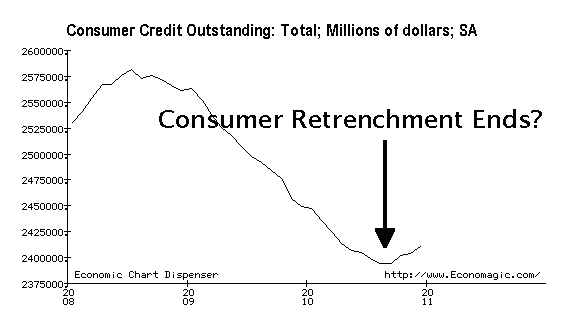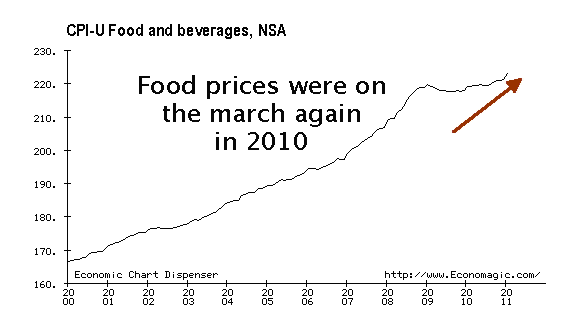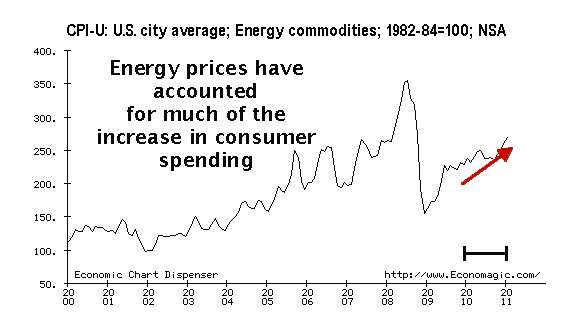
Sunday, February 27, 2011
Bank of India becomes first to offer trade settlement in yuan
 From The Times of India:
From The Times of India:BEIJING: Bank of India has become the first Indian bank to offer trade settlement facility between the rupee and the Chinese RMB from Hong Kong. This follows intense persuasion by the China Banking Regulatory Commission, which is trying to gain acceptance of the RMB as an international currency.
"We are the first Indian bank to offer real-time settlement facility in RMB to Indian exporters and importers. It will be save a lot of time because settlement in US dollars usually takes three working days," Arun Kumar Arora, BoI's chief executive in Hong Kong, said during a recent visit to meeting regulators in Beijing.
Indian buyers are at present making payments in US dollars, and they often have to convert rupee into the US currency for the purpose. The US dollars will no more be the intermediary currency as the BOI is offering direct settlement between the rupee and the Chinese money.
Chinese exporters want their money in the local currency, which is regarded as more stable compared to the US dollar. They are also in a position to have their way because Indian buyers do not have an alternative source of low-cost goods, sources said.......read on
Silver Headed to $50 an Ounce in 2011?
By Greg McCoach
Friday, February 25th, 2011
Gold will continue dominate the precious metal headlines in 2011. But it's silver that will ultimately be the year's top performing precious metal.
Don’t get me wrong; gold will do very well for investors this year.
But on a dollar-for-dollar basis, silver is going to blow the doors off gold’s performance in 2011.
Silver could easily eclipse the metal's 1980 nominal high of $50 an ounce this year.
And when you learn just how little silver is available on the market right now, I think you'll agree...
The ten largest precious metal traders on COMEX currently hold net short silver positions that represent more than 330 million ounces — nearly half of total global silver production.
Compare that to gold, in which the net short position in of the same ten traders represents 25 million ounces (or a mere 1%) of the 2 billion ounces of world gold inventory.
That means the net short position in silver is 27 times greater than that of gold.
This is setting up what I believe could be an explosive situation for wise investors.
| Silver Prices |
 |
The world's largest holders of silver bullion account for roughly half (500 million ounces) of the available 1 billion ounces of worldwide silver.
This is spread over the seven largest investment funds, which include iShares Silver Trust (NYSE: SLV), the Central Fund of Canada (AMEX: CEF), and others.
This means only 500 million ounces remain for the rest of the world to invest in.....read on
The Recovery That Never Was

Andy Sutton
25 February 2011
Is 0.4% really that big of a deal?
This morning, the Commerce Department revised its GDP estimate for the fourth quarter of 2010 by 0.4% to the downside. That in and of itself is certainly not newsworthy, but the reasons given for the downward revision most certainly are. For the first time in quite a while, the government and the media are actually allowing the light of truth to shine into government reporting. One of the biggest reasons (which has been included in many headlines) is that cuts in state government spending are largely responsible for the cut in GDP. So what, that is common sense isn't it? It will be, but let's analyze. I've talked many times about how GDP numbers have been overstated because they included government spending that comes from borrowed money. While those discussions generally focused on the federal government, this includes the states too. The states issue debt in the form of general obligation and specific bonds to do much of their spending since they, like the federal government, are largely insolvent. This spent borrowed money counts in GDP the same as a dollar spent that had been kept in savings. The thesis proposed months ago was a simple one; the states are going into extremis and when they do, down goes GDP. Double that for the federal government.
This is one of the biggest reasons that no one in Washington really wants to cut government spending, putting the rhetoric aside. They all know that if they were to cut a trillion dollars from the federal budget that GDP would fall by around 1/14th and we'd have an instant depression. Yet at the same time, a trillion dollar cut in spending is exactly what needs to happen along with a bevy of program reforms; and that is just for starters. Hopefully this gives you a better appreciation of the predicament we're in as a nation. This is one of the reasons I think politicians are taking up the stance that they agree cuts need to be made, but can't agree on which ones. This will give them all political cover to maintain the status quo thereby cutting essentially nothing, while making much in the way of fanfare over insignificant token cuts. The idea of shutting down the government and its massive entitlement system has already been floated to scare people into pressuring their leaders into maintaining the status quo. Stay tuned; it gets better.
Chaste Consumers?
Consumers also did not escape blame for the lack of more vigorous 'growth'. Spending had originally been thought to have increased at a 4.4% annualized rate. It turns out spending likely only increased at 4.1%. Bad consumers! From our good friend Jeannine at AP:
"Consumers spent a little less than first thought. Their spending rose at a rate of 4.1 percent, slightly smaller than the initial estimate of 4.4 percent. Still, it was the best showing since 2006. And it suggests Americans will play a larger role this year in helping the economy grow, especially with more money from a Social Security tax cut."
Talk about opinion shaping. This should be another indicator that nobody is really intent on fixing anything. While I am all in favor of a tax cut, one without reform seems rather obtuse, especially given the fact that Social Security is already in the red and busted out beyond description in terms of its unfunded promises. The program needs a massive overhaul, not insipid palliatives.
What cannot be left alone in the above press line is the suggestion that consumers are going to lift the economy in such a Herculean manner. First of all, let's get it straight that much of the 'gain' in consumer spending (as measured by retail sales) came from the fact that consumers are paying more for food and gasoline and, sadly, have increased their debt burdens slightly to do so. More unsustainability.
To demonstrate this, I'll show a couple of charts; the first is the slight, but significant increase in consumer credit followed by the steady increases in both food and energy prices throughout all of 2010:

Now let's get a better idea of where at least a portion of those borrowed dollars went - first food and beverage prices:

Now, for energy…

Consumers paying more for staple goods doesn't constitute economic growth, yet this is exactly what the Keynesian deficit-lovers would have you believe. And we know the CPI is in most cases grossly understating the real increases, but at least you now have a visualization of the issue. It may very well be that this next boom in consumer indebtedness comes more from necessity rather than greed and avarice. With the labor market still incredibly soft, and thousands of discouraged workers falling out of the BLS counts each month, the credit card is the only place many people will be able to fill the gap.
Further anecdotal evidence that supports the notion that this 'recovery' was nearly entirely a contrived event (thanks to borrowed government money and increasing prices of finished goods) is the housing market. Home prices have continued to drop despite the frantic calls of 'bottom' from market analysts, hopeful professional associations like NAR, and the mainstream press. Foreclosures continue to mount and even CNBC got on the bandwagon a few weeks back reporting that around 11% of all homes in the US are now sitting empty. A genuine bottom up fix would have corrected many of these problems. Spending a trillion dollars to rebuild our manufacturing base would have created jobs beyond those necessary to do the building. It would have employed people on an ongoing basis, miraculously converting bad debts into good ones. Instead we chose to do a top-down fix, lavishing trillions of dollars on banks, brokerages, and lobbyists in the hope that a few bucks might find their way to Joe Q. Public. It reeks of too much textbook and too little practicality.
The recovery that never was is over. Continuation of the current state of affairs will result in further debt accumulation by a system that is ready to disintegrate on its own weight. Assuming the consumer can step in and spend up where even state governments leave off is an absurd idea. Assuming they can fill the black hole left by a gutted and fiscally impotent federal government is laughable.
Andrew W. Sutton, MBA
Chief Market Strategist
Sutton & Associates, LLC
www.sutton-associates.net
andy@suttonfinance.net
Andrew W. Sutton, MBA received graduate honors in the field of Economics and is the Chief Market Strategist for Sutton & Associates, LLC, a Registered Investment Adviser in the Commonwealth of Pennsylvania. For more information about the company, its products and services, or contact information, please visit our website. Please feel free to distribute, copy or otherwise disseminate this information.
Gold & Silver Rise Again As History's Chosen Currencies

24 February 2011
Gold's history as a currency extends back thousands of years. The western world's first known standardised minting of gold currency took place in 564 BCE by King Croesus of western Asia Minor. However, it is also believed that China in the fifth and sixth century BCE, minted the Ying yuan gold coin as well. In the great Gupta Empire of India, from 320 to 550 CE, gold coins were used throughout its domain. And in the early Islamic world around the time of the Prophet Muhammad, the gold dinar coin led as its currency. In Europe, gold coins became an important or central monetary unit for the Greeks, Romans, Venetians, Dutch, Spanish and British.
During approximately 1870 to 1910 all major countries linked their currencies to gold, thereby adopting the gold standard. However, China was the exception preferring a silver-based standard. The first silver coins are reported as being minted by King Pheidon of Argos around 700 BCE.
Gold and silver have historically asserted themselves as monetary mediums due to their intrinsic value. They are consistent, divisible, durable and convenient, and they are nobody's liability.
Unlike paper money, gold, particularly, has proven itself in maintaining its value over many centuries. The World Gold Council (WGC) says that, "since the 14th Century, gold's purchasing power has maintained a broadly constant level… an ounce of gold has repeatedly bought a mid-range outfit of clothing… in the fourteenth century… in the late 18th century and… at the beginning of this century (2000 to 2008)… On the other hand, the US dollar that bought 14.5 loaves of bread in 1900 buys only 3/4 of a loaf today. While inflation and other forces have ravaged the value of the world's currencies, gold has emerged with its capacity for wealth preservation firmly intact… [whether] in the face of financial turmoil… [as] a crisis hedge… [or] as an inflation hedge."
Since their origins, central banks have realised the importance of gold, and sometimes silver, as a strategic part of their reserves. Commenting on the rapidly rising price of gold, Alan Greenspan, former chairman of the US Federal Reserve, said in a Bloomberg report on September 9, 2009, that, "[the rising gold price is] an indication of a very early stage of an endeavor to move away from paper currencies… What is fascinating is the extent to which gold still holds reign over the financial system as the ultimate source of payment."
And this is also because, "[the central banks] no longer trust each other… [and] there's this perception that different countries are trying to weaken their currency in order to get a competitive advantage," said Francisco Blanch, head of global commodity research at Bank of America Merrill Lynch at a New York City November 2010 conference, reports Fastmarkets. Among the countries whose central banks are increasing their gold reserves are China, India, and Russia-all countries with mammoth trade surpluses and foreign exchange reserves.
However, as throughout history, he who owns gold and how much he owns is often shrouded in secrecy. For a central bank, covertly selling and buying of gold and its currency can be used to secretly manipulate the value of its currency. Some indirect proof of this comes again from Mr Greenspan during testimony to a US Congressional committee in 1998. He remarked that, "central banks stand ready to lease gold in increasing quantities should the price rise." Therefore, declaring the precise gold holdings of a central bank might be akin to giving away 'trade secrets.'
Central banks worldwide supposedly hold around 30,000 tonnes of gold, perhaps 20 to 25 per cent of all the gold ever mined. But true independent verification of their holdings is not available. The US based Gold Anti Trust Committee (Gata) has compiled extensive and critical information concerning western central bank gold holdings. Their information and that from other sources suggests the actual physical gold holdings of some western central banks could be 30 to 50 per cent lower than publicly reported.
As an example, the US boasts official gold holdings of 8,133.5 tonnes. However, it is known that some, perhaps a significant portion of these holdings, have been leased out to various financial entities and might not be returned without huge financial losses. Ron Paul, the chairman of the influential US Congress's Domestic Monetary Policy Subcommittee of the House Financial Services Committee, is so concerned about such activities that he is calling for a full public audit of US gold holdings.
Additionally, gold is possibly set to play a reinvigorated role in the international monetary system. The International Monetary Fund (IMF) as well as most members of the G20 are seeking alternatives to the US dollar as the world's principal reserve asset. And in this regard, gold-perhaps silver too-could be included in a basket of currencies and commodities that create the basis for a new international unit of exchange (currency).
Moreover, an RBC survey of global financial executives and business leaders reported on Yahoo! Finance on February 3 that "just 52 per cent of respondents expect the dollar to be the world's currency in five years," and that "gold is coming back as a reserve currency 'of sorts,'" says Marc Harris, head of global research at RBC Capital Markets.
Probably since the beginning of civilisation, gold especially, but silver as well, have served as monetary vehicles. Gold has demonstrated itself to hold its value over centuries and in many diverse cultures. And despite today's sophistication with paper money, gold is still seen by central banks as the ultimate source of payment. Concerns are growing that the real physical gold holdings of some major central banks might be substantially lower than they have reported, and as they unabashedly devalue their paper money, gold and silver rise once again as history's chosen currencies.
Founder & Analyst
Investing for the Soul
http://investingforthesoul.com
E-mail the writer: r.robins@alrroya.com
Jim Rickards discusses Gold, Silver, SDRs & QE3

Jim Richards discusses gold, silver shortages, SDRs & QE3 with Eric King of King World News......listen here
